Hosted by OSOS , contributed by Laurianne on 19 June 2018
Project presentation
Let's assume that an astronomical object approaches Earth. What is it ? Is it a danger for us ?
To understand the surrounding world, to develop critical and scientific mindset, to resolve complex problems, to work in a collaborative environment, to communicate efficiently … all these skills are part of the skills a student must have to be a responsible citizen in a world constantly changing (21st century skills).
This project aims toward deeper learning in astronomy. It enables students to develop these skills. It takes place in schools and at Cité de l’espace, a science center.
The first part of the project, taking place in the school, is about introducing astronomy basics to the students and understanding the location and peculiarity of Earth in the solar system. Then, during a day at Cité de l’espace, students participate in a specific workshop and get to see pedagogical shows. During the workshop, students are introduced to scientific approach and rigor. Students are active and learn to work in small autonomous groups but also to collaborate. They carry out experiments, do observations, draw conclusions and present their results to peers. Eventually, each group work during the workshop is presented and analyzed back in the classroom.
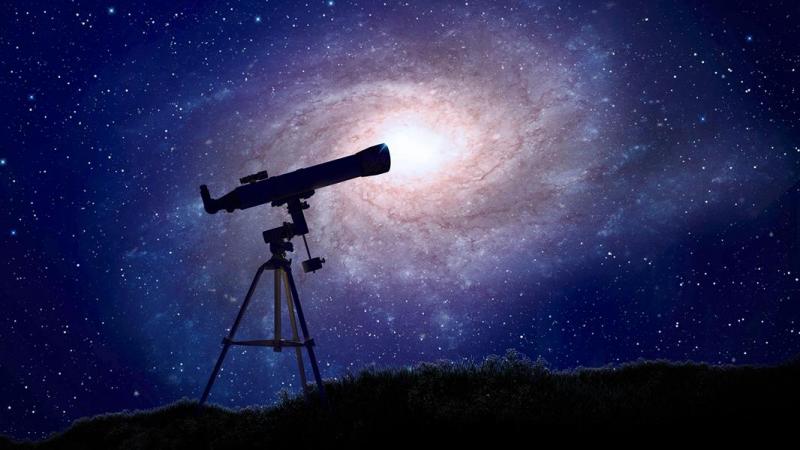
Learning objectives
- Carry out several experiment in astronomy
- Use scientific and educational material
- Use digital tools
- Follow an experimental approach
- Follow a protocol
- Work in collaboration
- Communicate with peers
- Discover the reality of scientific work
RRI principles:
One of the key aspects of OSOS is the inclusion of RRI — Responsible Research and Innovation — principles (more information at RRI-Tools.eu). This is how this Accelerator fits into the RRI model:
|
Governance |
Students will be able to understand the surrounding world, develop critical and scientific mindset by resolving a complex problem with the guidance of a science center. I.e.: Students can learn about astronomy and the solar system to better understand our place in the univers with the help of Cité de l'espace. An astronomy workshop will be realize at Cité de l'espace together with a visit of all the facilities. The science center will also provide a series of activities to realize in the classroom. |
|
Public Engagement |
The astronomy workshop is based on a transdisciplinary and collaborative approach. All the students share the responsability to solve a complex problems by working in small groups on different aspects of the problem and discuss together their results, getting a feedback from the science center educator and other students. I.e.: Students have to understand if an astronomical object approaching Earth can endanger life on Earth or not. They can get feedback on their work from the science center educator, teacher, other students and event scientists. |
|
Gender Equality |
The activity is established with a gender-neutral approach, it will benefit both men and women. I.e. : Students will act as scientists and discuss and discuss their results with a gender neutral approach. |
|
Science Education |
Students will use a scientific approach to solve a complex problem. They will have to develop their critical thinking and analytic mindset to find the solution of the problem. I.e.: Students will feel empowered by solving a complex problem about astronomy by themselves. |
|
Ethics |
Students will share responsibility in the project, in compliance with the research integrity and the social values of Science. The project is about reflecting on their place in the universe and if their lives can be endangered. They are more likely to act as responsible citizens. I.e.: The students will be responsible for understanding if an astronomical object can endanger their lives. They have to conduct experiments incorporating research integrity. |
|
Open Access |
Many ressources are available on line to learn about astronomy and our place in the univers. |
Available partnership opportunities
|
Cité de l’espace (science center) |
Astronomy workshop and scientific data during the visit
|
|
Observatories |
Visits / Discussion with an professional astronomer |
|
University |
Discussion with scientists |
|
Parents |
Realize some experiment at home. Assist their children in the outdoor activities (experiment/ stars observation) |
![]()
Resources needed
Conserning the workshop, Cité de l’espace (science center) will provide everything needed.
- Solar system planets pictures
- pictures of the various small bodies of the Solar System (asteroids, comets, meteorites ...)
- a saucer
- an ice cube made of water and some sand
- crepe-paper
- tape
- a hair dryer
- 2 tennis balls.
- some modeling clay.
- 9 sewing needles.
- 8 small boxes
- Plaster bandage
- Newsprint paper
- A box ( 1,10 m x 1,10 m), twine, rulers, supports (wood or cardboard)
- Computers with an internet access
For more informations : http://scolaires.cite-espace.com/activites-pedagogiques/primaire
Organization in charge of this Accelerator
This Accelerator has been developed by Laurianne Palin and Christophe Chaffardon, from the Cité de l'espace.
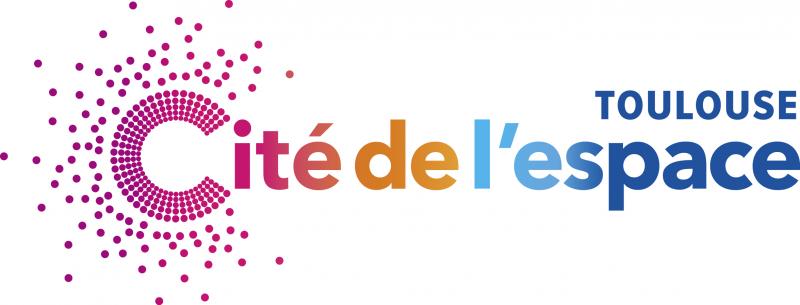
Laurianne Palin - l.palin@cite-espace.com
Christophe Chaffardon - c.chaffardon@cite-espace.com
La Cité de l'espace : http://www.cite-espace.com/
La Cité de l'espace - Avenue Jean Gonord - Toulouse - France
Tundke
Addressed challenge : Let's assume that an astronomical object approaches Earth. What is it ? Is it a danger for us ?
Students need to understand the world they live in to be able to make responsible decisions. In this activity, they will develop critical and scientific mindset, resolve complex problems, work in a collaborative environment, communicate efficiently … All these skills are part of the skills a student must have to be a responsible citizen in a world constantly changing (21st century skills). In this section they will learn more about the solar system and what is in it, to understand our place in the univers.
Session 1 - Discover the 8 planets of Solar System - Expected time: 90 minutes
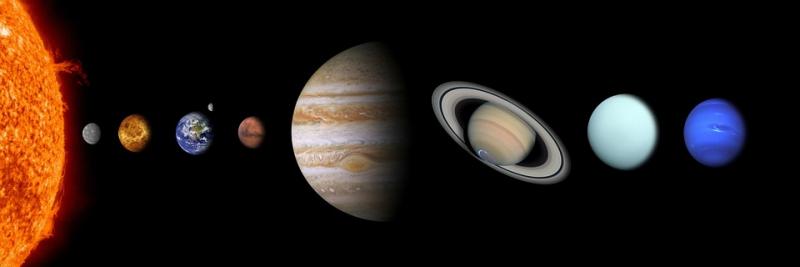
Starting from a planet picture, engage a reflection with the students to give them knowledge about the planets.
Example: where does the Mercury’ Craters come from? Why are such craters not visible on Earth?
Objectives:
- Discover characteristics of planets of the Solar System.
- Analyze and comment pictures.
- Practice "comparative planetology”
Activity:
- Projection of pictures : compare the first quarter of Mercury to the first quarter of the moon / explain other planets & satellites
- Discuss why does the Mercury’ Craters exist? And why there are or not craters on other planets?
Needs: Solar system planets pictures
Session 2 - The small bodies of the Solar system - Expected time: 90 minutes

Credits: NASA, ESA and D. Jewitt (UCLA)
Discuss the presence of small bodies in the Solar System and their differences: asteroids, comets, dwarf planets (eg Pluto).
Objectives:
- Identify the different small bodies of the Solar System.
- Analyze and comment pictures.
Make a comet ‘model: ice cube placed on a saucer to which is glued a crepe-paper band, the Sun is represented by a hair dryer (source of heat)
Rules:
- The comet is the ice cube (mode of water and some sand, dust). It’s in a saucer with crepe-paper which represent the tail of the comet.
- The sun is the hair dryer, source of heat.
Activity:
- A student takes the hair dryer and puts it in the direction of the ice cube.
- An other student takes the saucer with the ice cube and does an elliptical orbit around the hair dryer. In fact, when the saucer is close to the hair dryer the ice cube melts and the dust escapes.
Needs: pictures of the various small bodies of the Solar System (asteroids, comets, meteorites ...) / a saucer / an ice cube made of water and some sand / crepe-paper / tape / a hair dryer
Session 3 - A Martian rover - Expected time: 90 minutes
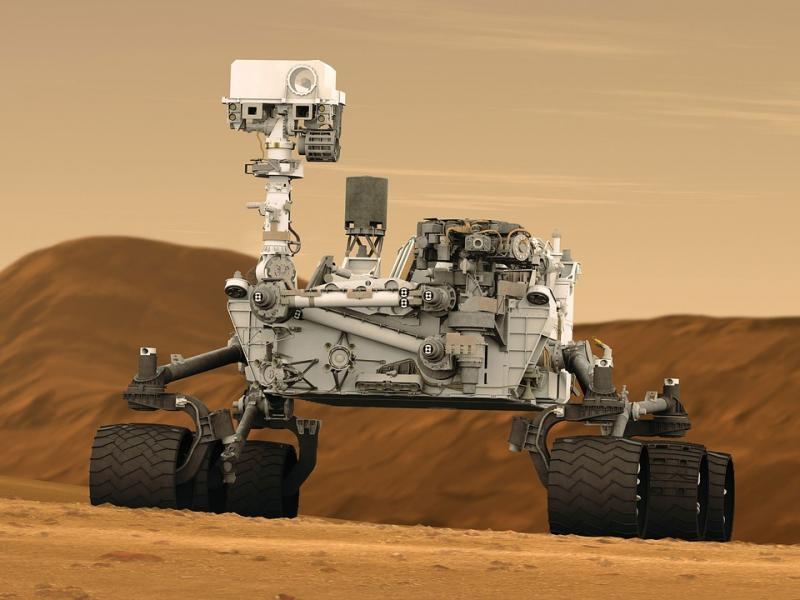
Credit : Nasa
Game to understand the principles of the transmission of information. Four roles: engineers (1 group), signals (1 group), electronic brain(1 pax), rover (1 pax). The aim is the rover has to take an object on Mars.
Objectives:
- understand how to drive a rover, understand the notion of transmission of information by a sequence of command.
Activity:
- Game progress: engineers whisper orders or questions to signals. Signals go to Mars zone and give orders or questions to the electronic brain(if it’s a question, the electronics brain can just answer “Yes” or “No”). The electronics brain give orders to the rover (the rover mustn’t talk)
- Classroom configuration :
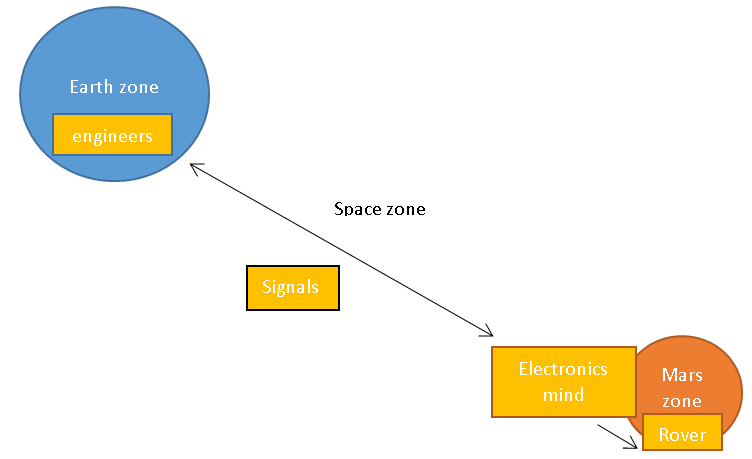
Kujutage ette
In this section, they will learn how to solve a complex problem with a scientific approach.
Session 1 - Workshop at the Cité de l'espace - Expected time: 1 DAY
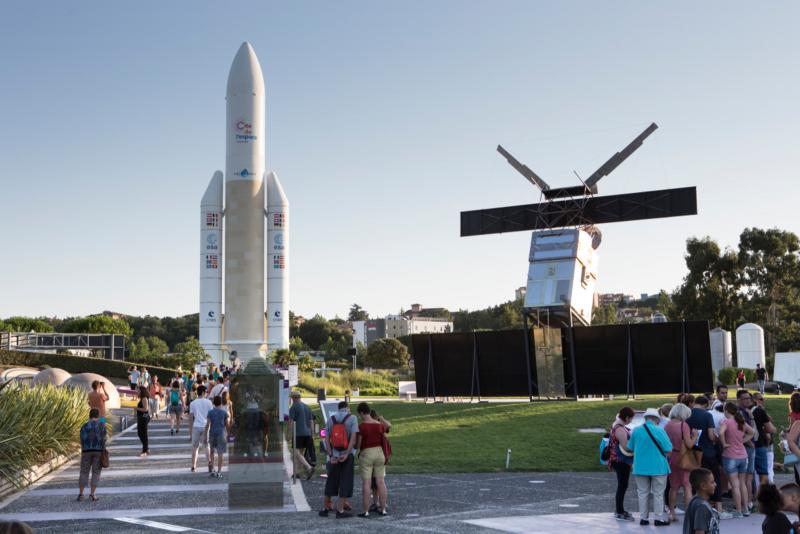
- In small groups of 3, students will have to carry out several experiments in autonomy (FEEL) using scientific and educational materials: measuring instruments, models, chemistry bench, iPad tablets ...
- Manipulations, experimental approach (IMAGINE), collaborative work, oral restitution (SHARE).
- Manufacture of a mini-comet using ice and coal, reproduction of impact craters and tsunamis using steel balls, combustion of a marshmallow, physico-chemical analysis of meteorites, Asteroid deflection simulation using air cushion mobile and ice tubes, realization of a model of the Solar System (CREATE).
Needs: Cité de l'espace provides everything needed.
Session 2 - Planets mythology - Expected time: 90 minutes

Documentary research is needed to understand the links between planets name and the mythology gods name. We can also discuss about the name of the days of the week.
Objectives :
- Experimental sciences and technology : sky and Earth
- The motion of the Earth (and planets) around the Sun
- Identification of time : reading the calendar
- History : the Antiquity
- Foreign languages
- Discovering the origins of the names given to the planets of our Solar System
- Introduce some elements of Greek and Roman mythologies
Activity:
- Students complete this chart :
|
In order from the Sun |
Planet name |
Planet characteristic |
Roman god characteristic |
Greek god name equivalent |
|
1 |
|
|
|
|
|
2 |
|
|
|
|
|
3 |
|
|
|
|
|
4 |
|
|
|
|
|
5 |
|
|
|
|
|
6 |
|
|
|
|
|
7 |
|
|
|
|
|
8 |
|
|
|
|
|
9 |
|
|
|
|
- With these information:
- Planet characteristic : the planet without atmosphere / the red planet / the planet of life / the hottest planet / the biggest planet / the other blue planet / the ringed planet / the planet moved on its orbit /
- Roman god characteristic : god of travelers and trade / god of beauty and loved / Earth God / war God / God of Gods / God of weather and harvest / sky God / sea God
- Greek god name equivalent : Hermes / Aphrodite / Gaia / Ares / Zeus / Cronos / Ouranos / Poseidon
Needs: computer with an internet access / students can help by an astrophysicist
Session 3 - On the road to Mars - Expected time: 90 minutes
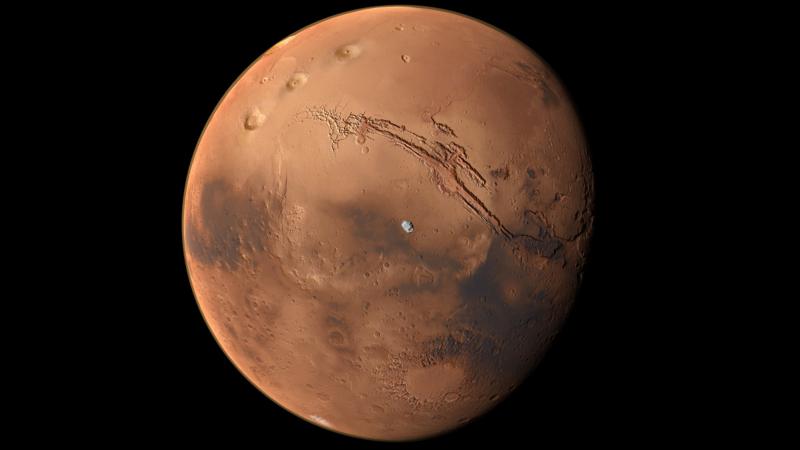
Objectives:
- Understand Earth-Mars distance and the travel time (hypothetical) with common means of transport.
- Evaluate plane and space rocket velocity.
Activity:
Complete this chart:
|
Trip Earth à Mars |
||||
|
Earth-Mars = 55 millions km |
||||
|
Transport |
Speed (km/h) |
Time trip (h) |
Time trip (days) |
Time trip (years) |
|
Foot trip |
3 km/h |
|
|
|
|
Car trip |
130 km/h |
|
|
|
|
Flight trip |
800 km/h |
|
|
|
|
Rocket trip |
|
|
|
|
Needs: nothing special
Loo
In this section they will create models of the solar system to understand and "feel" the scales at play.
Session 1 - Solar System’ Model on 240m - Expected time: 90 minutes
In this model the Sun is represented by a tennis ball. The model must be at the same scale for sizes and distances.
Objectives:
- Experimental Sciences and Technology: sky and Earth.
- The movement of the Earth (and planets) around the Sun
- Mathematics: exploitation of numerical data, quantities and measures.
- Measure lengths
- Calculating with the calculator
- Make a model of the Solar System using the same scale for sizes and distances
HELP for the teacher :
|
|
real diameter (in km) |
Model diameter (in mm) |
Distance from the Sun (in millions of Km) |
Distance from the Sun (in meter) |
|
Sun |
1 400 000 |
75 |
- |
- |
|
Mercury |
4 900 |
0,3 |
58 |
3,1 |
|
Venus |
12 100 |
0,6 |
108 |
5,8 |
|
Earth |
12 800 |
0,7 |
150 |
8 |
|
Moon |
3 500 |
0,2 |
0,38 (distance from the Earth) |
0,02 (distance from the Earth) |
|
Mars |
6 800 |
0,4 |
228 |
12,2 |
|
Asteroids |
< 1000 |
< 0,1 |
330 à 480 |
17,6 à 25,6 |
|
Jupiter |
143 000 |
7,7 |
778 |
42 |
|
Saturn |
120 000 |
6,4 |
1427 |
76,5 |
|
Uranus |
51 000 |
2,7 |
2870 |
154 |
|
Neptune |
49 000 |
2,6 |
4500 |
240 |
|
Centauri Proxima |
|
|
40 850 000 (4.3 light year) |
2180000 (2180 km) |
Needs: Two tennis balls / Some modeling clay / 9 sewing needles / 8 small boxes
Session 2 - Manufacture models of our planets - Expected time: 90 minutes
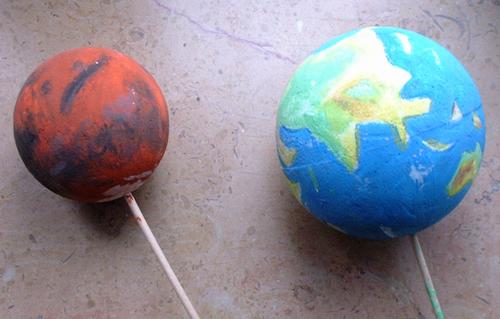
In this model the lengths and distances aren’t at the same scale.
Objectives:
- experimental sciences and technology : sky and Earth
- The motion of the Earth (and planets) around the Sun
- visuals arts
- manufacture a 3D model
- measure lengths and the perimeter of the circle
- Use scales and principle of proportionality
HELP for the teacher :
|
|
Sun |
Mercury |
Venus |
Earth |
Mars |
Jupiter |
Santurn |
Uranus |
Neptune |
|
Model diameter (mm) |
1090 |
3 |
9 |
10 |
5 |
112 |
94 |
40 |
39 |
Needs: Plaster bandage / Newsprint paper / A box ( 1,10 m x 1,10 m), twine, rulers, supports (wood or cardboard).
